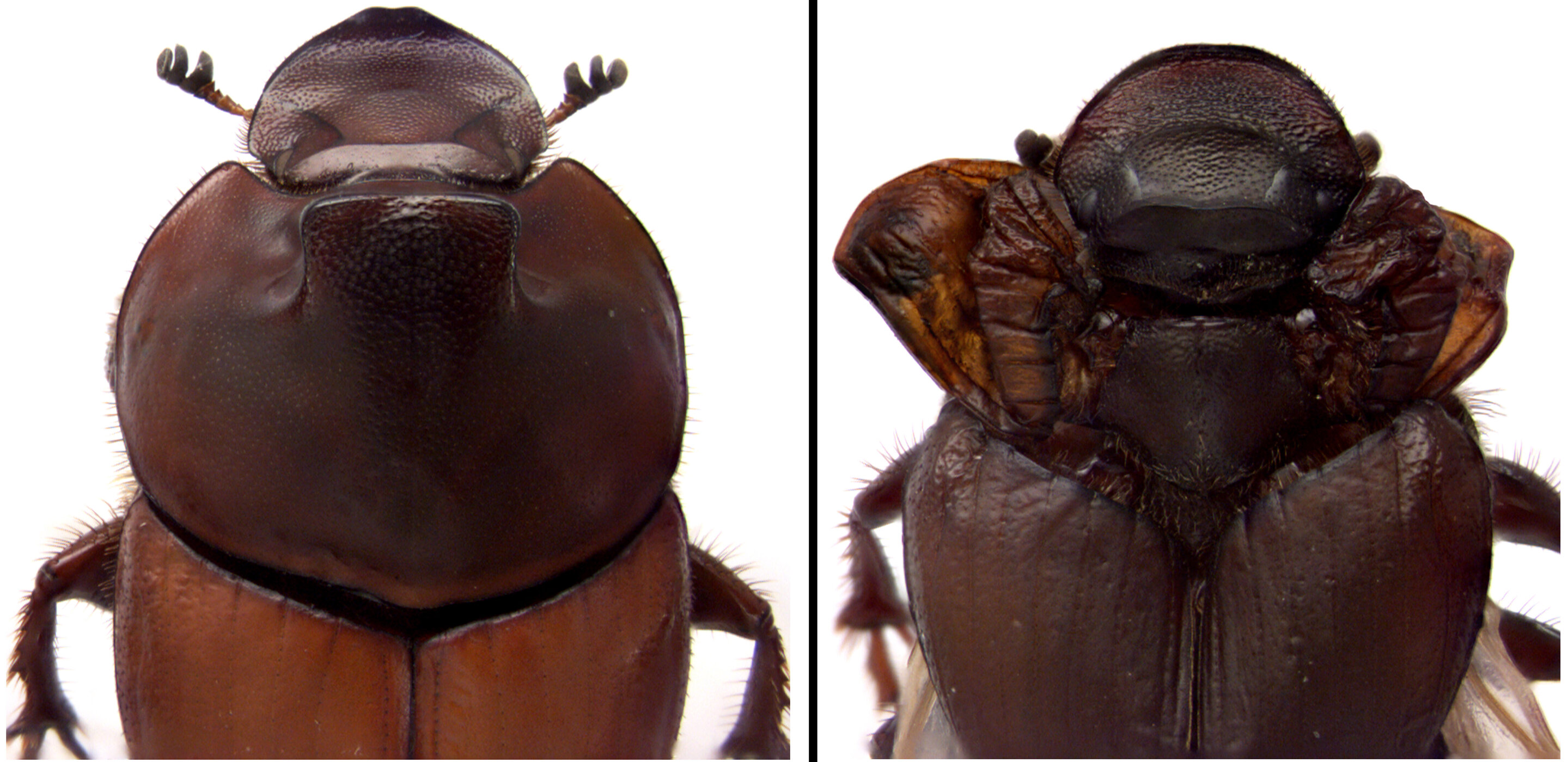
The left image shows thoracic horns in a typical dung beetle. The right image shows the effect of reducing the expression of a gene in the wing gene network in beetles, which results in the thoracic horn transforming into an extra third set of wings. Credit: Indiana University
Only horned beetles have a thoracic horn:
“Dung beetles are fascinating creatures,” said Armin Moczek, the study’s senior author and a professor in the IU Bloomington College of Arts and Sciences’ Department of Biology. Among their many qualities, one structure has placed them at the forefront of discussions about novelty among researchers. That structure is their thoracic horn, which is regarded as a textbook example of an evolutionary novelty. This is because the thoracic horn is unique to horned beetles, and it appears to have no relationship to any other structure in the animal.
The new IU-led study, which is featured on the journal’s cover, provides evidence that the formation of the thoracic horn is instructed by the same core network of genes that led to the evolution of insect wings: flight structures that exist on neighboring thoracic segments. In fact, this ancient gene network predates not just wings and horns; it already existed before there were insects, and in every segment along the entire body.
“This work forces us to rethink what we mean by ‘novelty'”, Moczek said. “Each insect segment possesses this gene network, and as such, it is an ancient feature of their makeup. Yet, what each segment does with this network is so strikingly variable that it can yield traits that on the surface seem to have nothing in common, like wings and horns.”
Indiana University, “Dung beetle discovery revises biologists’ understanding of how nature innovates” at Phys.org
It’s as if there is an intelligence underlying nature, the way a good novelist builds in backstory and plot structures that can be developed later.
For example, the protagonist’s father left the family when she was seven, so when she turns out to have a half-brother she has never met, we aren’t altogether surprised or skeptical. Or the detail could be used for a completely different purpose (her new boss is actually her dad but neither knows this because he is in the witness protection program).
Darwin’s co-discoverer, Alfred Russel Wallace, would have understood the underlying idea.
See also: Who’s Throwing Stones At “Nature’s Prophet”? (Wallace)
What use are horns to a beetle?
Follow UD News at Twitter!